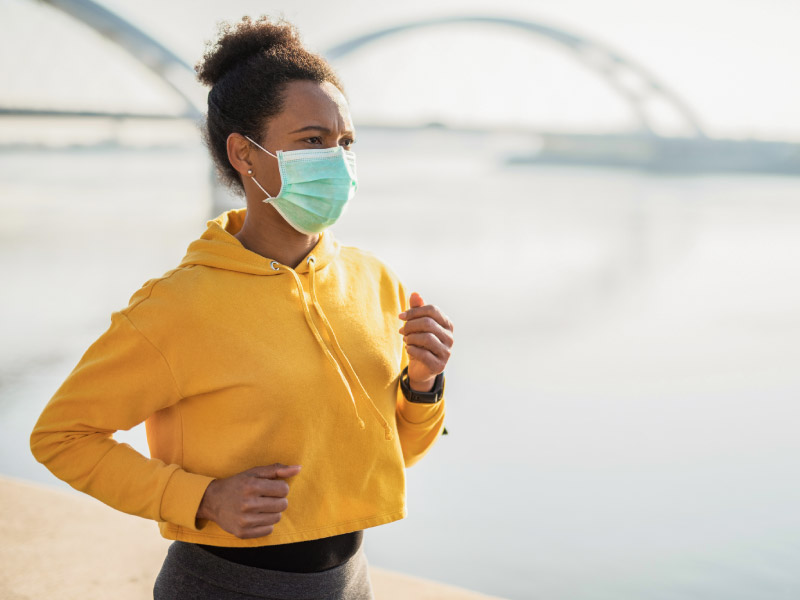Is it OK to exercise when you're sick?
By Genaro C. Armas, American Heart Association News

If you are sick and plan to exercise this cold and flu season, experts say to use your head – and recognize the body's warnings signs.
It's especially important to take precautions this winter during the COVID-19 pandemic. Consulting a doctor always is a good idea if there are any questions about symptoms or whether to quarantine or isolate.
But in general, physical activity isn't necessarily a no-no for a milder illness like a simple head cold.
"The typical rule of thumb that a lot of practitioners and exercise physiologists like to stick to is that if symptoms are above the neck, it's OK to get out there and do some exercise," said Amanda Paluch, assistant professor at the School of Public Health and Health Sciences at the University of Massachusetts Amherst.
Think a runny nose or light headache, though it might be wise to ease up from the typical routine, she said.
"Maybe just going out for a walk instead of a vigorous run," Paluch said. "You can still see benefits even with this lower intensity. Just getting out there could actually help you feel a little better."
Symptoms below the neck like chest congestion or upset stomach typically are signs to avoid exercise. Never exercise when you have a fever, regardless of whether it's related to the flu, COVID-19 or another virus, said Dr. Felipe Lobelo, an associate professor at Emory University's Rollins School of Public Health.
Recently updated guidance from the Centers for Disease Control and Prevention recommend that people diagnosed with COVID-19, with or without symptoms, generally should isolate for at least 10 days after the onset of symptoms or after a positive test.
So, that means no exercising during that time, too, Lobelo said. Even after that 10-day period, he said people should wait another week before resuming exercise.
And the return to exercise after recovering should be gradual. "You probably will feel deconditioned because of some bed rest and much lower levels of activity, on top of any lingering effects of COVID if you had a cough, fatigue or shortness of breath."
It's important, Lobelo added, to notify your doctor if symptoms don't improve gradually with exercise or if new symptoms like chest pain, shortness of breath or extreme fatigue develop during physical activity.
Finding safe and responsible ways to stay active remains important during the pandemic, whether at home or while outside with social distancing. According to the CDC, physical activity reduces blood pressure and anxiety, improves mood and energy level, and helps people get better sleep.
However, it's best to avoid indoor activities at gyms because of the increased potential for coronavirus transmission, Lobelo said. If you do go, wear a face covering, maintain social distancing and wipe down equipment regularly.
"You really want to focus on outdoor activities as much as possible," Lobelo said. He also encouraged people to take a mask with them outdoors to wear for instances like passing someone on a trail.
Paluch offered tips for those not accustomed to exercising in the cold, including wearing layers of clothing that can be shed if needed. Wearing a mask while exercising has the added benefit of helping to keep your face warm.
A fitness tracker also could be a creative way to stay active and engage virtually with family and friends, said Paluch, who researches the benefits of wearable sensors. For instance, family members might race to see who can accumulate the most steps during a week and compare results online.
"These kinds of things can keep people connected and maybe provide some motivation," Paluch said. "You can have that social support without direct contact."
If you have questions or comments about this story, please email [email protected].




